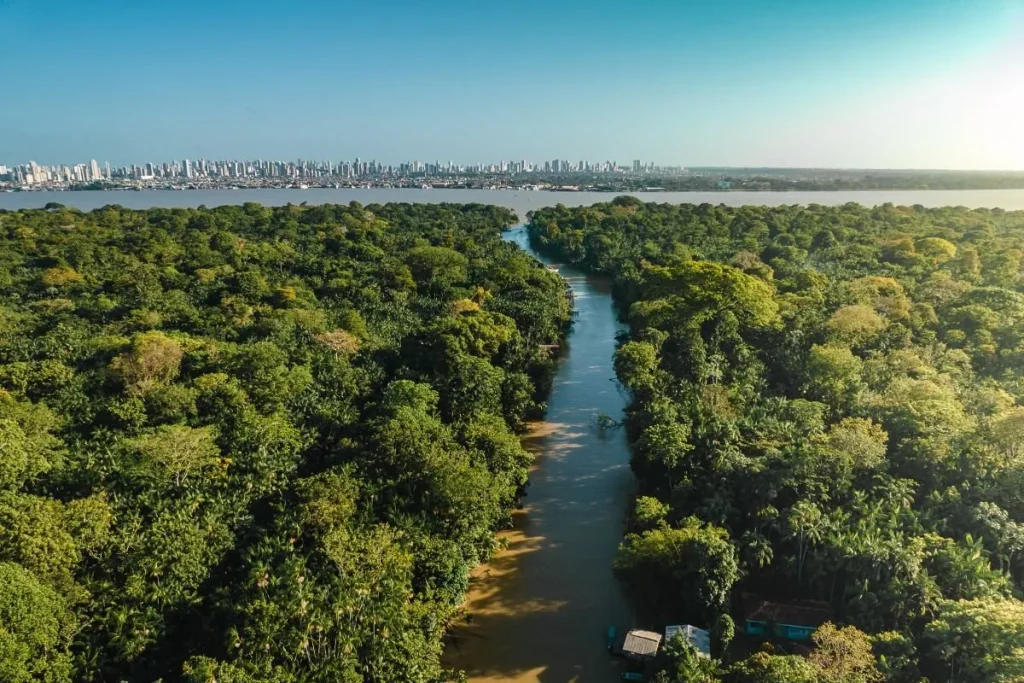SYLLABUS
GS-3: Conservation, environmental pollution and degradation, environmental impact assessment.
Context: The presidencies of COP29 and COP30 (Azerbaijan and Brazil) had jointly commissioned the report ‘Baku to Belem Roadmap to USD 1.3T’ to explore additional avenues to reach the $1.3 trillion goal by 2035.
More on the News
• The Roadmap’s stated scope is to serve as a coherent reference framework that consolidates existing initiatives, concepts, and leverage points to scale up climate finance in the short to medium term.
• It outlines measures aimed at mobilising at least US $1.3 trillion annually for developing countries by 2035, without creating new mechanisms or prejudging the NCQG implementation by Parties.
Key Provisions in the Report
• Investment requirement: The Roadmap acknowledges the climate and nature-related investment requirements of the developing countries in 2035 would be about $3.2 trillion a year.
• Five action fronts on finance: The Roadmap identifies Five “action fronts” to scale up climate finance for developing countries, represented by the ‘five Rs’ to achieve the USD 1.3 trillion goal:
- Replenishing (grants, concessional and low-cost finance),
- Rechannelling (“transformative” private finance),
- Rebalancing (fiscal space and debt sustainability),
- Revamping (capacity and coordination for scaled climate portfolios),
- Reshaping (systems for equitable capital flows).
• Priority Themes: The Roadmap is organised around five thematic priorities each illustrating how targeted investments can drive sustainable growth and shared prosperity.
- Financing adaptation and loss & damage;
- Financing nature and its stewards;
- Clean energy transitions;
- Agriculture and food systems;
- Just transitions.
• Future Discourse: It suggests practical next steps that ‘could’ be carried out by various actors for the period of 2026-2028 for implementation of the Roadmap.
This includes:
- A Presidency-led establishment of an independent expert group to refine data and develop financing pathways.
- Dialogues with Parties and stakeholders throughout the year to track progress.
- To enhance predictability, developed countries could present Joint delivery plans outlining contributions toward the US$ 300 billion goal and other NCQG elements in their 2026 biennial communications.
• Financial resource diversification: The report explores a variety of options to raise additional financial resources for climate action, and considers the possibility of carbon tax, wealth tax, corporate taxes, aviation taxes, levies on luxury goods and even direct budget contributions from developed countries.
• Reporting Contributions: The Roadmap recommended that the world’s 100 largest companies (ranked by market cap) and the world’s 100 largest institutional investors (ranked by assets under management) could report annually how they are contributing towards the implementation of Nationally determined contributions and National adaptation plans.
Challenges in Roadmap:
• Limited scope of changes: There is no provision of welcoming or negotiating on the roadmap that can lead to weakening of the implementation of the roadmap itself.
• Lengthy Funding process: Developed countries would publish forward-looking finance plans by end-2026 and the UN’s Standing Committee on Finance would total those plans only in 2027, signifying Roadmap’s focus on process instead of immediate funding.
• Limited Funds availability: The world has been chasing the “billions to trillions” vision for financing development for many years, with many acknowledging success has been largely amiss.
• Shirking of obligations by Developed countries: Following the NCQG outcome, developing countries have been demanding a dedicated space to discuss Article 9.1 of the Paris Agreement, which states that developed countries have an obligation to provide new, additional, public finance to developing countries for climate action.

